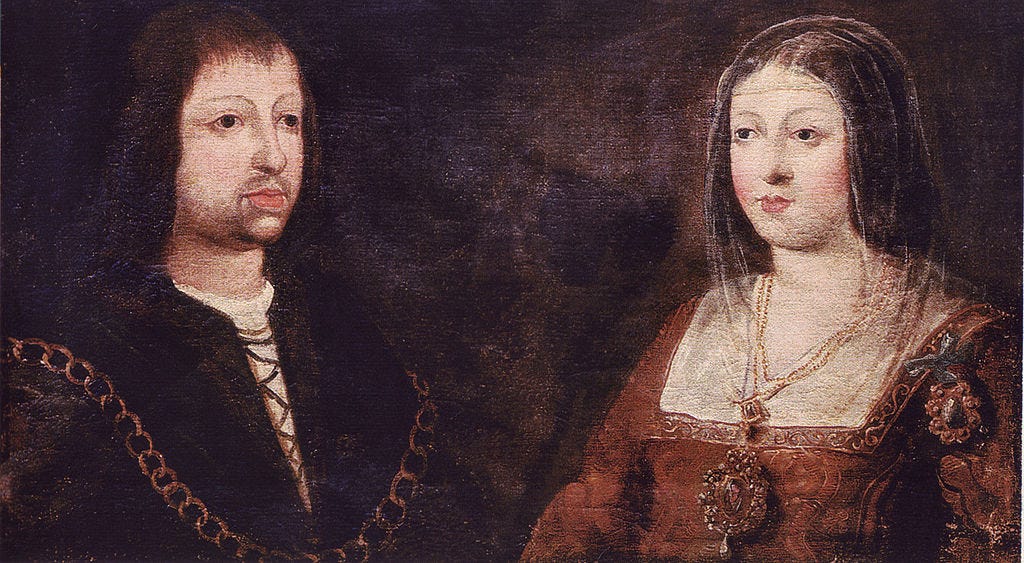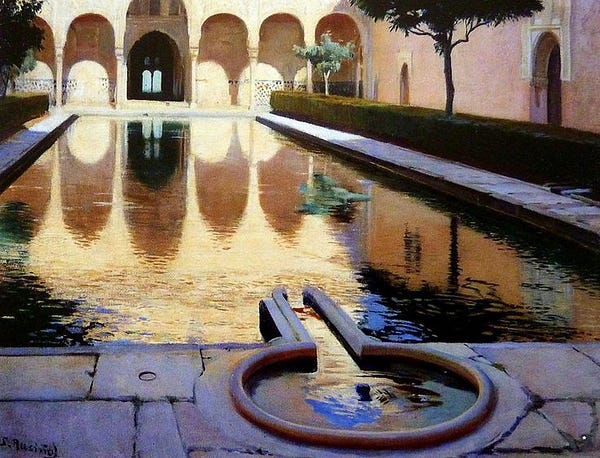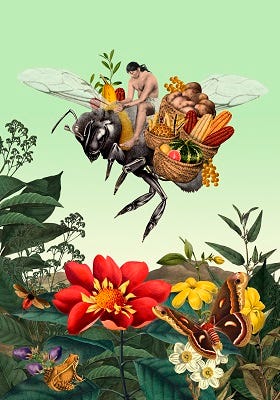Sick and couchbound
Tertulia, vol. 6
Hola. This is Barbara with information on interesting stuff from Spain and Spanish America. This newsletter comes much later than thought because I have been troubled with some severe scalds from spilling hot water on my leg and foot. The kitchen is indeed a dangerous workplace! It was a painful experience, but I am feeling much better already.
The real Game of Thrones?
The weeks of involuntary rest on the couch gave me the opportunity to spend many hours binge-watching the Spanish TV series Isabel about the life and reign of Isabel la Católica (1451-1504). There was not much else I was able to do, but it turned out to be a time very well spent. I had started watching the series almost three years ago, but stopped because of lack of time. The series consists of three seasons spanning all the life of Isabel from her upbringing in Arévolo, her marriage with Fernando, king of Aragón, her auto-proclamation as queen, the reconquista of Granada, the first exploration of what would be called America, the expulsion of Jews, the forced conversion of the Muslim population, and her final years when she had to witness the deaths of her own kin and potential heirs. In short: The series narrates the first stage of what would later become the Spanish nationstate and depicts the transition from medieval customs to the modern era, including its dark moments.
It progresses very slowly - the series has a total of 39 hour-long episodes - and offers a lot of historical accuracy. The series was a big success for public TV when its broadcast started in 2011. Like a well-produced telenovela, the series comes with many parallel threads that allow for cliffhangers even though the history as such is well known. I’d like to highlight that this approach leaves time that is dedicated to some minor characters: the friends, the diplomats, financiers, and religious people who were close to the queen of Castile and had a lot of influence.
I have to admit that some conversations at court sound excessively clichéd and unduly solemn. It may as well be an attempt to represent courtly conventions of that time, but sometimes it simply sounds like stiff stage language. Additional information on historical data accompanied the episodes and at the time of the first broadcast, a lot of interactivity with the followers of the series took place. You can still watch or read all of this if you wish to dig deep into the series resp. the epoch. Education and entertainment really team up to their best. Well done, RTVE!

Some episodes, motives, and characters reminded me of the series Game of Thrones, which also started broadcasting in 2011. The Castilian heartlands in the North of Spain are often depicted covered in snow like the Kingdom of the North, while Seville and Granada show the mediterranean and lush splendor of King’s Landing. The characters are as intrigant in the historical drama as they are in the series based on George R. R. Martin novels with their many allusions to medieval figures and rituals. Moreover, Isabel’s idealism which later turns into fanaticism very much resembles the development of Daenerys Targaryen’s character, mother of dragons. In some scenes, when Fernando wears a thick fur coat he also looks a bit like Jon Snow. Is all this mere coincidence or imitation? I am not sure, but the Spanish TV producers are proud to say: «Aquí hay historia de verdad y además es bastante rigurosa.» (There's real history here, and it's quite rigorous)
A fun fact of the royal family (not part of this series, but of its sequel, Carlos, rey emperador) that currently resonates with me: Did you know that Juana I de Castilla, Isabel’s and Fernando’s daughter and official queen of Castile from 1504 to 1555, died from scalds which she suffered when taking a hot bath? Unlike her, I am happy to having had loving people around who have taken care of me and my burns.
Maíz, yuca, fríjoles: The prehispanic cuisine in Colombia
When Juana came back from Flanders, she qualified the Spanish cuisine of her time as crude and unrefined. The asados (roasted meat), which she refers to in a scene of the series Isabel, were very popular at that time. Meat was widely consumed. This type of animal protein did not play the same role in the diet of the subjects who lived in the new territories of the Spanish empire. Have you ever wondered what the prehispanic cuisine in the Americas may have looked like? The Colombian historian Jorge Orlando Melo gives us a fascinating overview of what it looked like in the neogranadine regions before the Spaniards colonized the area.
As the historian states in his article «La dieta prehispánica: salud y equilibrio ambiental», the indigenous people of the region followed a diet with almost no sugar, no dairy, no fried foods, no gluten. Near coasts and lakes, people also ate fish. In the internal regions, guinea pig and deer were known as sources of animal protein. However, the consumption of fats and meats was minimal. This sounds very healthy and climate-friendly to modern ears. Furthermore, the chroniclers of the early colonization confirm that there was an abundance of food to feed a growing population. No famines were recorded. The inexistence of big cities prevented the spread of epidemics. Studies of anthropologists confirm that the adequate mix of corn, potatoes, yuca, pulses like beans and vegetables from the squash family provided a healthy diet without nutritional deficiencies. The list of fruit unknown to European palates was also very long. This all changed when Europeans came and added meat, dairies and sugar to the domestic menu. The new mestizo dishes perhaps added many new flavors, but not necessarily nutritional gains - at least not for those at the bottom of the social scale. The changed diet had dramatic social consequences: lands which had served for the traditional agriculture were used as pasture land for domesticated livestock, unknown in prehispanic times. Therefore, starting with the 19th century, a lot of staple foods had to be imported while the domestic meat products remained reserved for the rich people because they were so expensive. The new diet of the indigenous people was no longer adequate to provide all the necessary proteins, especially when we also consider how many of them were forced to do very hard work. They had to do all the physical work in mines, construction, on the farms, which required the intake of more calories than they could afford:
There is no data to draw firm conclusions, but José Vicente Rodríguez, an anthropologist who has measured hundreds of indigenous skeletons, is of the opinion that the height of indigenous people in 1980 was circa eight centimetres less than that of pre-columbian men (Orlando Melo, citing Rodríguez (2011), 2020, p. 14, translation mine).
Tremendous if further studies confirmed these findings.
Music pick: Juan del Encina’s «Triste España sin ventura»
To round off today’s tertulia in spirit with the epoch covered, I have selected a folk song (villancico) by Juan del Encina (1468-1529) from the Cancionero de Palacio (Palace song book). This collection of songs very well represents the music during the reign of Isabel and Fernando and, hence, when the first European travels to America happened. The song is titled «Triste España sin ventura» (Sad, joyless Spain), assumedly mourning the premature death of the monarchs’ son and heir to the throne, Juan, in 1497. The interpretation I have chosen is interpreted by La Capella Reial de Catalunya, directed by Jordi Savall. As you may well imagine, the song’s headline has been evoked in many different historical occasions.
Oh, one more thing:
Spring has finally arrived in the Northern hemisphere. Even if I am not able go out currently, I can enjoy the daffodils, forsythias, magnolias, and the birds’ tweets from the windows in the sitting room. As twitter friend Pedro Lalanda from Madrid puts it so nicely: «Luz, sol, paz. Monosílabos que, juntos, pueden transportar el alma al paraíso.» (Light, Sun, Peace. Monosyllabic words that together can take your soul to paradise). Enjoy!


This is all for today. I hope you have appreciated my time travel to early renaissance and prehispanic times. Let me know your feedback and suggestions.

